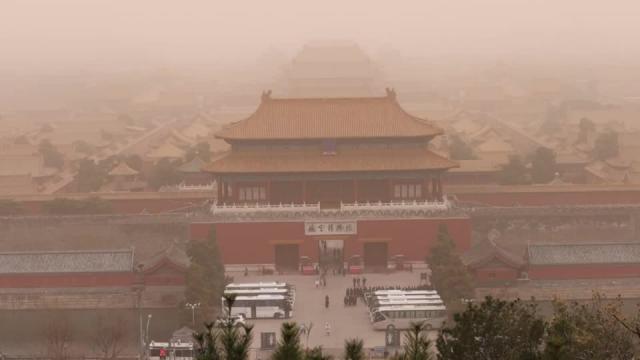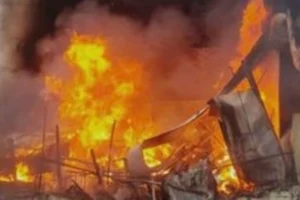
Beijing Skies engulfed by Sandstorms
Beijing and several other provinces could experience heavy sandstorms through Wednesday, and state media stated that Chinese forecasters have warned residents about respiratory risks and extremely low visibility when traveling.
Over the past few weeks, Beijing’s capital has experienced both normal air pollution and an unusually high number of sandstorms.
A blue weather signal was issued by forecasters for sandstorms. Red is the most severe weather warning and blue is the least severe in China’s four-tiered color-coded weather warning system.
According to the website of the Beijing Municipal Ecological and Environmental Monitoring Center, on Tuesday morning, smog and misty grey clouds could be seen enveloping Beijing, and the city’s real-time air quality index was at a serious pollution level.
Also read: Elon Musk’s ‘X’ Tweet Confuses Internet
According to IQAir, a website that publishes data and information about air quality, the concentration of fine particles in the air in Beijing is currently 46.2 times the yearly guideline threshold set by the World Health Organization.
According to the Central Meteorological Observatory, sandstorms and heavy dust will continue to impact a dozen provinces until 8 a.m. (0000 GMT) on Wednesday, including the cities of Shanghai and Inner Mongolia.
Also read: S Korea To Conduct 1st Launch Of Commercial-Grade Satellite
On Weibo, China’s Twitter-like social media network, the sandstorms were once more a popular discussion subject, generating 2 million talks.
Because Beijing is so close to the vast Gobi Desert, sandstorms frequently occur there in March and April.
According to a recent statement from a Chinese government official at the Ministry of Ecology and Environment, there are now four times as many sandstorms as there were in the 1960s as a result of rising temperatures and decreased precipitation in the deserts of north China and neighboring Mongolia.
Also read: Caller Threatens To Assassinate Salman Khan On April 30
To read more such news, download Bharat Express news apps


















